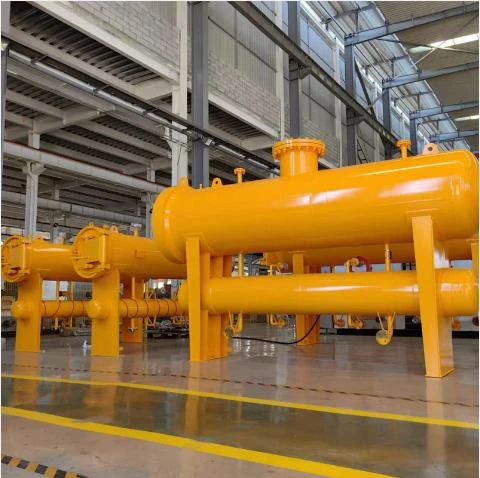
Nov . 12, 2024 01:12
Back to list
صمام منظم ضغط الغاز
Understanding Gas Pressure Regulators The Heart of Gas Control Systems
Gas pressure regulators are vital devices in various industries, including healthcare, food processing, and manufacturing, ensuring that gas is supplied at a safe and consistent pressure. These devices are essential in applications where precise gas pressure is critical to maintain safety and efficiency.
What is a Gas Pressure Regulator?
A gas pressure regulator is a mechanical device that automatically reduces the pressure of a gas flowing from a high-pressure source to a more manageable, lower pressure that is suitable for end-use applications. These regulators are designed to maintain a specified outlet pressure irrespective of variations in inlet pressure or downstream demand.
The Importance of Gas Pressure Regulation
1. Safety High-pressure gas can be hazardous. Regulators prevent dangerous over-pressurization in gas supply lines and equipment, reducing the risk of leaks and explosions. For instance, in medical applications, regulating the pressure of gases like oxygen is crucial for patient safety.
2. Efficiency Efficient gas use is critical in industries like food processing and manufacturing. By providing a consistent pressure, regulators ensure that equipment operates optimally, minimizing waste and enhancing productivity.
3. Versatility Different applications require specific gas pressures. Regulators can be adjusted or selected based on the application, ranging from home heating systems to industrial gas burners.
How Does a Gas Pressure Regulator Work?
The basic function of a gas pressure regulator involves controlling the flow of gas using various mechanical components. Here’s a simplified explanation
.
2. Sensing Element A diaphragm or piston usually senses the outlet pressure. It responds to the pressure changes by moving to open or close a valve.
صمام منظم ضغط الغاز

3. Control Valve As the diaphragm moves, it adjusts the valve opening. If the outlet pressure rises above the set point, the diaphragm moves to reduce the gas flow, which lowers the pressure. Conversely, if the outlet pressure drops, the diaphragm opens the valve to allow more gas through.
4. Outlet Pressure The result is a steady outlet pressure that meets the requirements of the downstream applications.
Types of Gas Pressure Regulators
Gas pressure regulators come in various types, categorized mainly by their design and application
1. Single-Stage Regulators These are simple devices suitable for applications where the inlet pressure doesn’t fluctuate significantly. They provide a quick adjustment but are not as stable under variable inlet pressure conditions.
2. Two-Stage Regulators These regulators offer more precise control by first reducing the pressure to an intermediate level, then to the desired outlet pressure. This design is preferred in applications with significant pressure fluctuations.
3. Backpressure Regulators These regulators maintain a constant upstream pressure and are commonly used in gas handling systems to ensure consistent flow rates.
Applications of Gas Pressure Regulators
Gas pressure regulators are utilized across numerous sectors
- Healthcare In medical gas systems, regulators ensure that gases like oxygen are delivered at safe and effective pressures to patients. - Automotive In natural gas vehicles, regulators adjust the pressure of gas entering the engine for efficient combustion. - Industrial Manufacturing processes use gas regulators to maintain pressure in gas-fired equipment, ensuring safety and efficient operation. - Cooking In commercial kitchens, gas regulators control the pressure of natural gas or propane to cooking appliances, ensuring consistent heat levels.
Conclusion
Gas pressure regulators play a crucial role in ensuring safety and efficiency in various applications. Their ability to convert high-pressure gas to a manageable level while maintaining consistent output is essential in many industries. Understanding their function, types, and applications helps users appreciate the importance of these devices in everyday operations. As technology advances, gas regulators continue to evolve, incorporating smarter designs and materials that enhance their reliability and performance, further securing their position as indispensable tools in gas management.
Next:
Latest news
-
Safety Valve Spring-Loaded Design Overpressure ProtectionNewsJul.25,2025
-
Precision Voltage Regulator AC5 Accuracy Grade PerformanceNewsJul.25,2025
-
Natural Gas Pressure Regulating Skid Industrial Pipeline ApplicationsNewsJul.25,2025
-
Natural Gas Filter Stainless Steel Mesh Element DesignNewsJul.25,2025
-
Gas Pressure Regulator Valve Direct-Acting Spring-Loaded DesignNewsJul.25,2025
-
Decompression Equipment Multi-Stage Heat Exchange System DesignNewsJul.25,2025

